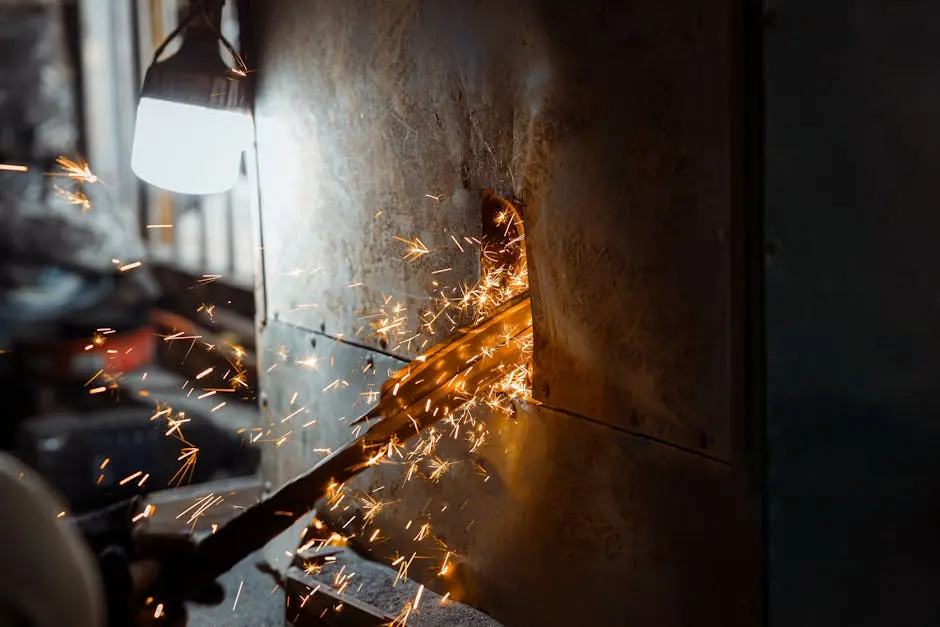Sandblasting services have become a popular method for cleaning, smoothing, and shaping surfaces. However, questions often arise concerning the safety of using this technique on various materials. In this FAQ, we’ll explore this topic to help you determine if sandblasting is suitable for your needs.
What is Sandblasting?
Sandblasting is a process that involves blasting a stream of abrasive material under high pressure to clean or etch surfaces. This process is commonly used in industries ranging from construction to automotive. By creating a smooth or textured finish, sandblasting can effectively prepare surfaces for painting or coating, ensuring better adhesion and longevity.
The term ‘sandblasting’ originates from the traditional use of sand as the primary abrasive; however, over the years, the choice of abrasive materials has expanded significantly to include safer and more effective options such as glass beads, steel grit, and even crushed walnut shells. Each type of abrasive offers different characteristics, making it suitable for varying surface materials and desired outcomes. For instance, glass beads are often used for stainless steel products to avoid residues, while steel grit is used for aggressive cleaning of heavy rust.
Modern sandblasting has evolved with advanced alternatives, both in terms of technology and materials, improving safety and efficiency. Companies now utilize high-performance equipment that can control the abrasive flow, minimizing waste and enhancing precision, which is critical for delicate surfaces.
How Does Sandblasting Affect Different Materials?
Depending on the material, sandblasting can have varying effects. Hard surfaces like metal may withstand the process better than softer materials such as wood or plastic, which could sustain damage. It is crucial to assess the type of material before choosing an abrasive, as the wrong media or pressure setting could result in undesired pitting or erosion.
The versatility of sandblasting makes it beneficial for surface preparation across many industries. In industrial applications, sandblasting is used to remove paint, rust, or scale, offering a clean and smooth surface to apply new coatings. However, for softer materials, it is recommended to test a small area or consult with professionals to avoid irreversible damage.
Innovative sandblasting methods can adapt to sensitive environments or surfaces requiring gentle treatment. For example, soda blasting uses baking soda particles that break apart on contact, reducing the impact on the surface while still providing effective cleaning results, which is particularly useful for delicate restorations or historical artifacts.
What Surfaces Are Typically Safe for Sandblasting?
Metals and tough stone surfaces like granite are generally safe for sandblasting. These materials can handle the abrasive nature of the process without incurring significant damage. Sandblasting is often employed to refurbish metal structures, machinery, or vehicles, where it effectively removes rust and old paint layers to prepare for recoating.
In industrial settings, seamless flooring and coatings benefit greatly from sandblasting by ensuring a clean, rough surface that enhances coating adhesion. Concrete surfaces, when sandblasted, are seamlessly prepped for epoxy or other finishing applications, offering durability and a refined appearance.
Which Surfaces Require Special Consideration?
Delicate surfaces, including certain types of wood, plastics, and glass, necessitate a careful approach or may not be suitable for sandblasting at all. Alternative methods should be considered for such materials. For instance, vinyl or acrylic surfaces might warp or become clouded when subjected to abrasive blasting.
When considering restoration work on historically significant structures or intricate details, it is imperative to evaluate the surface conditions and potential adverse effects. In such cases, expertise and conservative techniques like low-pressure blasting might be necessary.
For surfaces requiring gentle adherence to preserve detail, professional assessment is crucial. Expert companies, such as ASR California, have extensive experience in evaluating and determining the suitable approach for each unique surface restoration project.
What Precautionary Measures Can Be Taken?
Employing protective coverings, selecting the correct abrasive material, and adjusting pressure settings are key steps in ensuring that sandblasting is performed safely, minimizing potential damage to surfaces. These actions not only protect sensitive areas but also enhance the overall efficiency of the cleaning or prepping process.
Worker safety is paramount during sandblasting operations. Proper personal protective equipment (PPE) is essential, including respirators, goggles, and protective clothing, to shield against dust inhalation and abrasive ricochet, significantly reducing health risks such as respiratory issues or skin damage.
Beyond worker protection, environmental considerations require stringent adherence to waste management protocols. Integrating containment systems and recycling abrasives where viable helps in preserving environmental standards, ensuring the sustainability of sandblasting initiatives.
Conclusion: Understanding Sandblasting Safety
Ultimately, while sandblasting is an effective method for many applications, it’s essential to understand the material compatibility and potential risks. Consulting with experienced professionals can ensure that you make informed decisions regarding the use of sandblasting services for your specific surface types. Discover the range of surface restoration services with ASR California to achieve optimal results, backed by skilled expertise and state-of-the-art technology.


